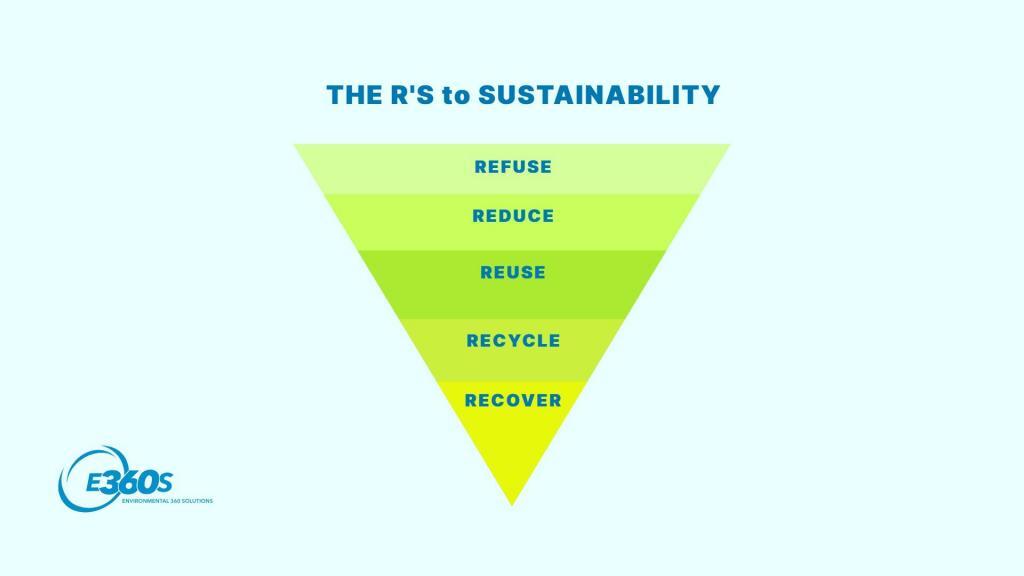As our world continually evolves, we must not only individually contribute to creating more waste in landfills but also we must constantly rethink how we see and treat waste. The classic 3 R’s to waste management are Reduce, Reuse, Recycle. We have since expanded on these 3 R’s.
So what are our principles to waste management? Our principles to sustainable waste management for recycling are for everyone and they are the 5 R’s – Refuse, Reduce, Reuse, Recover, Recycle.
Refuse
Just as certain wastes may need to be refused at recycling sites because of their nature, and the ability of the site to process them. Consumers need to be mindful to refuse products that use unsustainable resources or services that do not work towards a more sustainable future.
You can contribute by choosing to not use single-use products such as Styrofoam cups and plastic utensils.
Reduce
Reduce your consumption of unsustainable materials. Whether it be reducing the use of plastic bags for packing lunch, bringing your reusable bags on your grocery run, everything makes a difference to a better tomorrow.
You could also reduce the amount of paper used by printing double sided. All around us are creative ways to minimalize our impact on the environment and it is up to us to find them.
Reuse
Reuse is about thinking before getting rid of an object.
Reuse is thus about giving a second life to something that we previously were considering to dispose of. You are practicing reusing every time you hand toys or clothing to clothing and toy donations. You are reusing when you choose to repair items, buy from garage sales, or find a new way to use the item.
Many people are finding new ways to reuse their items in creative ways. Upcycling is a new trend wherein by-products, waste materials, or unwanted products are transformed into new materials or products that are perceived to be of greater quality (such as environmental or artistic value).
Recycle
Recycling is the process of using discarded waste materials to create new products. This enables businesses to use less of the original resource.
Collect the cardboard, containers, newspaper, paper, tin and aluminum cans, and organics and make sure to place them into your recycling bins.
Yesterday’s newspaper can become today’s kitty litter, paper plates, or reused as printing paper again.
Aluminum cans are processed at plants to become a whole variety of new products. Such products include new cans, aluminum bike frames, window frames or even airplane parts.
Organics can be placed in your composting bin to become fertilizer for your lawn thus reducing the overall need to product chemical fertilizers.
Recover
Recover is the last R in the loop. It is the process of trying to recover as much as we can out of the materials or products before they are sent to a landfill site. This step is taken after all the previous steps are taken and the materials or products aren’t able to be taken.
The first step is to identify whether the item has any parts that are recyclable but can’t be recycled in its current state. This could include taking apart household appliances or other household hazardous waste products and separating out what can be recycled.
As much as 85% of material from a computer monitor can be recycled or recovered for reuse after being taken apart. Do your part and check for local household hazardous waste and recycling depots in your area to reduce landfill.
The next step for non-recyclable materials in sustainable waste management is to recover energy. This step changes the non-recyclable materials into useable electricity, heat, or fuel through processes, including combustion, gasification, and incineration. This process is commonly referred to as Waste-to-energy (WtE) or energy-from-waste (EfW).
Unfortunately, not all materials can be recovered into energy and those left over after following these 5 steps will likely end up in landfill sites, which is why we must all do our part in creating a sustainable future by making smart choices that create the least amount of impact to our environment!
